By Zoey Greco
Primary Question
For my ethnographic exploration of Tumblr, I posed the following overarching question to several users of the site: “Do you believe that Tumblr at large is a safe space for feminists of color? Why or why not?”
I chose this question because I felt it was what each of the students in the class were aiming to discover about their site online. I felt on Tumblr I had the ability to pose a direct question and get back straight answers with valuable acumen where as other students in our class had to reconstruct their questions to cater to a certain population (i.e. Charlotte in the Lady Gaga forum) in order to gleam insights from the responses.
Specific Method
In order to gather this information, I spent several hours daily on tumblr exploring spaces by searching key phrases including but not limited to “feminism”, “anti-feminism”, “feminist”, “anti-feminist”, “racism”, “anti-racism” “racist”, “anti-racist”, “black”, “lesbian”, “black lesbian” “women of color” and “feminist of color”. I also conducted one-on-one interviews with a number of users of Tumblr where I posed to them the over-arching question framing my research as well as several sub questions that built context for their responses. Additionally, I conducted some secondary research to obtain a demographic breakdown of the usage of Tumblr. I found this information at http://www.quantcast.com/tumblr.com. I also attempted to obtain information of the monitoring of Tumblr by Tumblr, as well as any rules and etiquette of using Tumblr but was unsuccessful in this endeavor as there seems not to be specific publications on such by Tumblr or others. I then posted my findings on the site and assessed the repercussions of that action.
Results
Much of what I encountered in my interviews were young women who either did not have a clear grasp on the ideals and practices of feminism or who do consider themselves to be feminist but “just don’t do anything about it”. Some even went so far as to say that they “don’t really care about the whole feminist thing!” I was also able to contact and interview several young women who explicitly consider themselves to be anti-feminist and dedicate a significant portion or their entire blogs to anti-feminist discussion and activity. One of these women who I interviewed at length, feministaresexist (a white, straight, anarchist, anti-feminist who’s about me says that she is “not your sister”), said overtly that her blog is “not a safe space for feminists of color” despite the fact that she previously stated that her tumblr is anti-racist simply because she “disagree[s] with feminism in all its forms.” Alternatively, I also sought out young women both Black and Caucasian who are explicitly feminist and devote their blogs to feminist activity. The overwhelming consensus of my interviewees and those who commented on my question thread was that Tumblr “is what you make it” and that it “is and it isn’t” a safe space for feminists of color. Only one interviewee, sistaoutsider (a black lesbian feminist blogger), blatantly stated that she believed that Tumblr was not a safe space due to the fact that “Tumblr is a blog created by and operated by white men” which to her is “fine”. However, she believes that “that also means is that when racism comes up or Black or other women of color are attacked on the blog, very little is done.” She explained that “this has NOT happened to [her], but [that she has] seen it happen to other bloggers.”
Conclusions
I argue that Tumblr is a place where intent and practice do not always align themselves. Despite the fact that 39% of Tumblr’s users in America are of color (19% Hispanic, 11% African American, 7%Asian, and 2% an unidentified “other”) (http://www.quantcast.com/tumblr.com.) in order to find spaces where people of color are represented, one must actively seek them out. Even in these places, it is not apparent that users are making an active attempt to engage in constructive discourse about issues of feminism and of racism. If “race is a question of relation…encounter [and] recognition”, then I do not believe that Tumblr is post-race, but rather attempts to be color-blind (Chun, 56). There is little relation, encounter, and recognition involving feminist and anti-racist schemas. However, as pointed out by Wendy Hui Kyong Chun, “the best way to fight racism might not be to deny the existence of race”. Tumblr is not overtly racist, but there is not enough active anti-racist practice on the site to deem it “safe”. Tumblr itself does not attempt to regulate or monitor racist posts and instead relies on its users to report such should they find it. In that way, it is not “reformulating race” but ignoring it (Chun, 57).
Through my attempt to analyze Tumblr as a safe space for feminist of color, I discovered that Tumblr is not actively a safe space for feminist of color. I believe in order for a space to be truly safe for feminists of color, all of its users must engage in an attitude and a dialogue that is inviting and supportive of feminists and anti-racist agendas. While those spaces can be found, Tumblr is overall a space that has safe and unsafe subspaces for feminists of color but as a whole is not a safe space due to the fact that it does contain these unsafe subspaces and does not gear itself toward active participation in feminist and anti-racist activity. Rather, it is a microcosm that reflects the attitudes of its many diverse users. Some spaces are specifically pro feminism where as others some are specifically anti-feminist. Other spaces celebrate people of color and feminists of color while others choose to remove themselves from any politically charged dialogue and focus on personal issues, thoughts, feelings and inspirations.
Works Cited
“Tumblr Blog Network.” Quantcast. N.p., n.d. Web. 8 Nov. 2012. <http://www.quantcast.com/tumblr.com.>.
Nakamura, Lisa, and Peter Chow-White. Race after the Internet. New York: Routledge, 2012. Print. Pg 57.
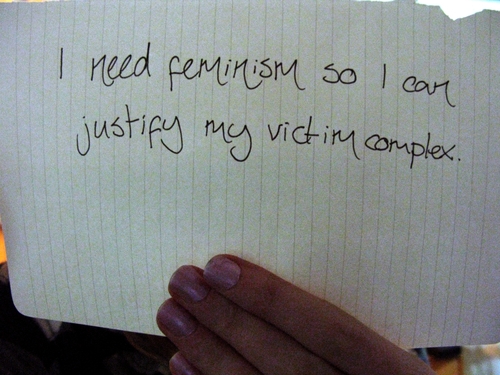
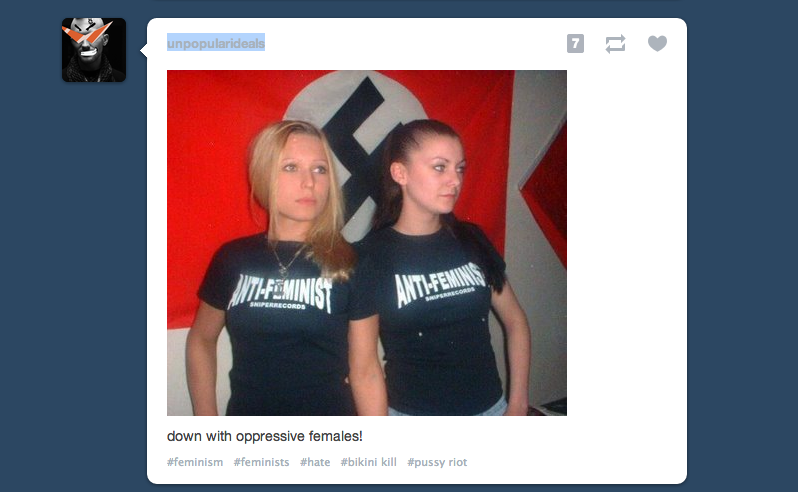
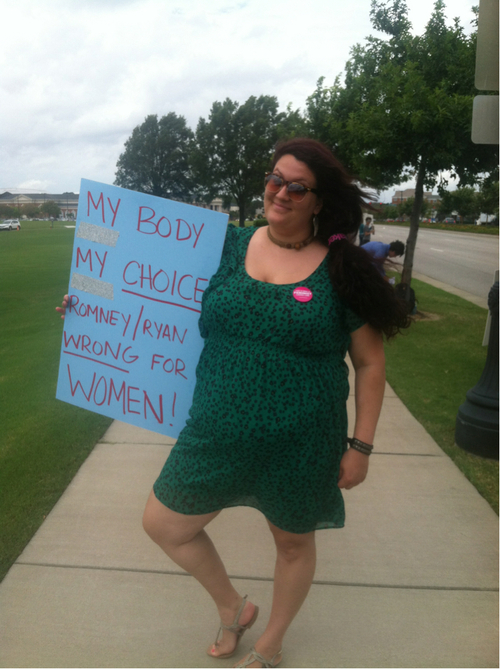
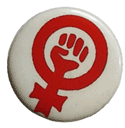
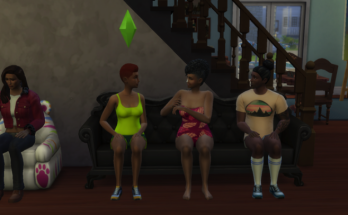
Thanks for the shout out. Little Monster struggle times. I like the way that you laid your work out. It is well-organized, and made your ethnography easy to understand. It seems like tumblr reflects “reality” in that safe spaces exist, but we have to actively seek them out.
Zoey,
I greatly appreciate your methods and the overall structure of your ethnography. You really jumped into tumblr. I wonder how the corporate structure behind tumblr influences this microcosm effect. Are there many ads on tumblr? Do they change depending on what microcosm you choose to inhabit? Just curious.
Good Job!
I definitely agree that Tumblr is both safe and unsafe. The people that I follow are mostly people of color who post on a variety of issues, and call themselves feminist. I’ve created my own little bubble of like-minded people, but I have also seen posts where people are attacked for expressing their opinion.
To answer one of the question posed by Alejandra Rishton, they didn’t have ads until recently.
I want to respond to Alejandra Rishton.
Tumblr does not have ads. But I do believe that there are tumblr’s run by corporate funds with the purpose of advertising, because tumblr will track what you like and may suggest something for you. But the chances of you paying attention to the “one and only” suggestion are very slim because of the way the UI is created.
@Original Poster
I really enjoyed your ethnography. It’s very “by the book”, which is awesome, and that you cited our work is great too! I wish i could have seen the photo’s you posted, but all in all, I think you did a great job of answering all the questions that I would have asked of you. 😛
Great job with your ethnography, Zoey!
I do think that Tumblr can be a little tricky in terms of deciding whether it is a feminist/anti-racist space or not. Participants have the option of expressing themselves in the many ways in which they’d like and that can include in ways that are racist/non-racist or feminist/non-feminist, just to name a few, depending on what their personal space (blog) includes and excludes.
As a non-Tumblr user, I’d like to explore the site a little more to get a better sense of what topics can be found (or not) on the site and see how “the rules,” if there are any, can affect what is shown or not.
Yes, this format made it readable and informative. Your research methods also allowed you to speak to a range of informed respondents who allowed you to draw useful conclusions about active rather than passive politics.